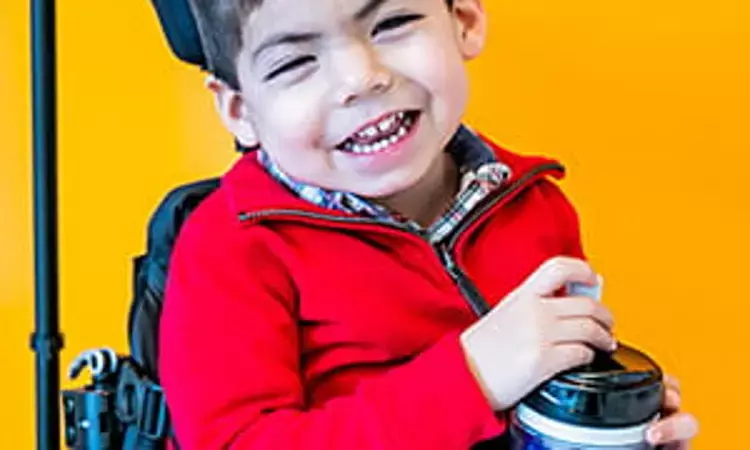- Home
- Medical news & Guidelines
- Anesthesiology
- Cardiology and CTVS
- Critical Care
- Dentistry
- Dermatology
- Diabetes and Endocrinology
- ENT
- Gastroenterology
- Medicine
- Nephrology
- Neurology
- Obstretics-Gynaecology
- Oncology
- Ophthalmology
- Orthopaedics
- Pediatrics-Neonatology
- Psychiatry
- Pulmonology
- Radiology
- Surgery
- Urology
- Laboratory Medicine
- Diet
- Nursing
- Paramedical
- Physiotherapy
- Health news
- Fact Check
- Bone Health Fact Check
- Brain Health Fact Check
- Cancer Related Fact Check
- Child Care Fact Check
- Dental and oral health fact check
- Diabetes and metabolic health fact check
- Diet and Nutrition Fact Check
- Eye and ENT Care Fact Check
- Fitness fact check
- Gut health fact check
- Heart health fact check
- Kidney health fact check
- Medical education fact check
- Men's health fact check
- Respiratory fact check
- Skin and hair care fact check
- Vaccine and Immunization fact check
- Women's health fact check
- AYUSH
- State News
- Andaman and Nicobar Islands
- Andhra Pradesh
- Arunachal Pradesh
- Assam
- Bihar
- Chandigarh
- Chattisgarh
- Dadra and Nagar Haveli
- Daman and Diu
- Delhi
- Goa
- Gujarat
- Haryana
- Himachal Pradesh
- Jammu & Kashmir
- Jharkhand
- Karnataka
- Kerala
- Ladakh
- Lakshadweep
- Madhya Pradesh
- Maharashtra
- Manipur
- Meghalaya
- Mizoram
- Nagaland
- Odisha
- Puducherry
- Punjab
- Rajasthan
- Sikkim
- Tamil Nadu
- Telangana
- Tripura
- Uttar Pradesh
- Uttrakhand
- West Bengal
- Medical Education
- Industry
Early intervention in kids with cerebral palsy may harness neuroplasticity: JAMA

Cerebral palsy is the most common childhood disability and is a clinical diagnosis of movement disorders. Catherine et al found that early targeted intervention builds on a critical developmental time for plasticity of developing systems.
Researchers from Cerebral Palsy Alliance Research Institute, Australia conducted an analysis of 16 systematic reviews and 27 RCT's which met the inclusion criteria. Nine important domains which were considered important in the study are motor function, cognitive skills , communication, eating and drinking , vision, sleep , tone , musculoskeletal health and parent support .
General best practice guiding principles framed from the study are:
(1) immediate referral for intervention after a diagnosis of high risk of CP,
(2) building parental capacity for attachment,
(3) parental goal-setting at the commencement of intervention.
Key findings from the study are:
-Child-initiated movement, targeted motor training activities, and task-specific and context-specific exercises have the potential tomaximize functional outcomes.
-Constraint-induced movement therapy (CIMT) and bimanual therapy were found to improve motor activity of limbs.
-Environmental enrichment plus family engagement in task specific and context-specific active learning that incorporates infant generated motor and cognitive actions had a positive outcome in cognitive domain.
-For children with emerging verbal communication and those suspected of being nonverbal, the benefits of parent-child transactional programs (eg, Hanen) include improvements in communication skills and expressive language acquisition.
-Early vision appropriate interventions(such as occlusion therapy for amblyopia, squint sygery) to reduce ocular morbidities.
-Children with CP are 5 times more likely to have a sleep disorder than children developing typically. Hence parents to be educated about sleep hygiene.
-For children with musculoskeletal impairment ,standing equipment and ankle-foot orthoses may be beneficial.
-Since parents of children with CP are at high risk for mental health problems, psychosocial support, and psychoeducation may be helpful for strengthening parent-infant relationships and parental mental health.
When an infant is diagnosed with or at high risk for CP, a comprehensive screening for comorbidities is recommended. Supporting parents and their relationship with their child is fundamental to comprehensive early intervention; however, it is not always prioritized. Parents' goals and aspirations must be central to the intervention, with parent participation essential.
Authors conclude: "We recommend beginning intervention at the time of suspected diagnosis to harness neuroplasticity through specific training and respecting parent requests for early intervention".
Source:JAMA pediatrics
Dr Kamal Kant Kohli-MBBS, DTCD- a chest specialist with more than 30 years of practice and a flair for writing clinical articles, Dr Kamal Kant Kohli joined Medical Dialogues as a Chief Editor of Medical News. Besides writing articles, as an editor, he proofreads and verifies all the medical content published on Medical Dialogues including those coming from journals, studies,medical conferences,guidelines etc. Email: drkohli@medicaldialogues.in. Contact no. 011-43720751


